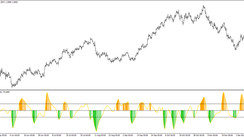During today's meeting, the Reserve Bank of Australia left the key rate at a record low of 0.10% and reiterated that it will not tighten policy until inflation stabilizes in the target range of 2%-3%. The bank also noted that the crisis in Ukraine has further clouded the prospects of the global economy. "The military operation in Ukraine is a serious uncertainty factor," said RBA Governor Philip Lowe. - Prices for many commodities have increased even more due to the conflict. In some countries, inflation has accelerated sharply due to a sharp rise in energy prices and disruptions in supply chains during a period of strong demand".
Now market participants, especially those who follow the quotes of commodity currencies, will prepare for tomorrow's meeting of the Bank of Canada. CAD receives significant support from rising oil prices, which again exceeded the $100 per barrel mark today. Taking into account the military actions in Ukraine and large-scale sanctions by the West against Russia, many oil market analysts expect a further increase in energy prices. On the one hand, this will support the quotes of the Canadian dollar, and on the other hand, it will accelerate inflation in the global economy, putting pressure on central banks to tighten monetary policy.
If the RBA has decided not to chase other key central banks yet, many of which have already started raising rates or signaled an imminent tightening of policy, then the Bank of Canada may raise the interest rate during tomorrow's meeting.
Unemployment has risen in Canada in recent months, including against the background of mass closures due to coronavirus and layoffs. Unemployment rose from the usual 5.6% - 5.7% to 7.8% in March and already to 13.7% in May 2020. As reported in February by the National Bureau of Statistics of Canada, unemployment in the country increased in January to 6.5% against 6.0% in December, and employment declined sharply (the number of jobs in January decreased by 200,100 compared to the previous month after an increase of almost 55,000 in December). These are negative factors for CAD.
However, they will not prevent the Bank of Canada from raising the interest rate tomorrow, as expected by 0.25%, to 0.50%. Theoretically, an increase in the interest rate has a positive effect on the quotes of the national currency. However, the market reaction may be ambiguous, given the high geopolitical tensions in Europe.
From the news for today regarding CAD and the USD/CAD pair, attention should be paid to the publication of data on Canada's GDP at 13:30. According to data published by the National Bureau of Statistics, Canada's GDP in the 2nd quarter decreased by -3.2% (year-on-year), while economists had forecast its growth by 2.5%. The data for the 3rd quarter turned out to be much better: annual GDP growth was +5.4% (against the forecast of +3.0%). However, many economists have lowered the forecast for the growth of the Canadian economy in 2021. The final data for the 4th quarter will be presented in March, and preliminary data indicate an annual GDP growth of +6.2% in the 4th quarter.
The negative effects of the coronavirus on the Canadian economy and the country's labor market, as well as the weakness of the housing market, still put pressure on the Bank of Canada to maintain a soft monetary policy. Nevertheless, at Wednesday's meeting, the Bank of Canada is expected to raise the interest rate by 0.25% to 0.50%. If the Bank of Canada signals the need for a soft monetary policy, the Canadian currency will decline. Today, volatility will increase again at 15:00 (GMT), when the index (PMI) of business activity (from ISM) in the manufacturing sector of the US economy will be published, which is an important indicator of the state of the American economy as a whole. Forecast: 58.0 in February (against 57.6 in January, 58.7 in December, 61.1 in November, 60.8 in October, 61.1 in September, 59.9 in August, 59.5 in July, 60.6 in June, 61.2 in May, 60.7 in April, 64.7 in March, 60.8 in February 58.7 in January 2021). The index is above the 50 level and has a relatively high value, which is likely to support the dollar. Data above the value of 50 indicates an acceleration of activity, which has a positive effect on the quotes of the national currency. If the indicator falls below the forecast and, especially, below the value of 50, the dollar may weaken sharply in the short term. The relative decline in the indicator is also not very positive for USD. The US currency remains one of the most volatile assets on the world market and actively reacts to any changes in the fundamental background. After the confirmation of an additional package of sanctions against leading Russian banks, the Ministry of Finance and the National Welfare Fund, the US currency began to fall sharply and has now fallen to 96.66 in the DXY index. Investors are concerned that serious restrictions against leading Russian economic institutions may affect the structure of the global raw materials supply market and create difficulties with currency conversion when paying for imports from the Russian Federation.
As for the USD/CAD pair, it is traded mainly in the bear market zone, below the key resistance level of 1.2860, as well as below the important short-term resistance levels of 1.2734, 1.2701. A breakdown of the key support level of 1.2640 will finally transfer USD/CAD to the long-term bear market zone (see Technical analysis and trading recommendations).





